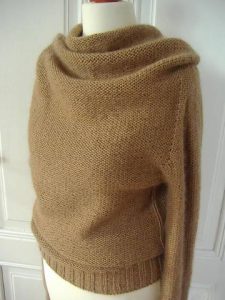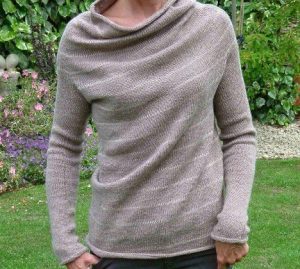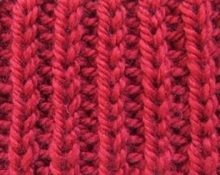
A knitted swing collar is an elegant addition to a DIY sweater or jacket.
To ensure that knitting brings you pleasure, decide on the size of your knitting needles. If you choose the wrong knitting needles, your project will look clumsy and your hands will get tired quickly.
Use a fine circular needle (experienced seamstresses prefer a US 0/2mm 40” [100cm] circular needle) to stitch along the front for the button band/collar. First, cast on stitches as described above.
Then count the stitches and determine if you need to add or subtract stitches to get the number of stitches indicated in the pattern. Now join the yarn and knit one row on the right side from a thin needle to the right size needle. As you knit, pick up or knit stitches together to achieve the desired number of stitches. Start any pattern stitch on the next row on the wrong side.

Preparation and step 1
Find the outermost stitch - it will be a V-shape, but will most likely curl inward, so make sure you identify it.
Advice: double-check that the stitches are calculated correctly before you start knitting. The collar should be a little wider than you think. After washing it will definitely shrink a little.
Step 2
Insert the needle into the inner sleeve of this letter V - not into the outer one, but into the one that is located along the inner edge of the letter V. Cast on 3 loops in a row, skip the fourth. Thread your needle the way it wants to go, whether your V-loop is upside down or not, your needle will move from the outside edge of the V-loop behind the sleeve to the inside edge of the V-loop.
Step 3
Continue casting on 3 stitches, skip the 4th to the end. This is a row to stitch ratio, so skipping every fourth row will give you the correct number of stitches for the button band.
Step 4
Note that when you are ready to knit, these new stitches may sit on the needle correctly, or they may sit on the needle backwards (depending on the direction). If they are sitting backwards on the needle, simply work each one through the back stitch. While knitting the first installation row, you can pick up these 4th, skipped stitches and knit them together with the stitch before or after. This is usually not necessary, but if you are worried about holes, this will help avoid them.


 0
0





